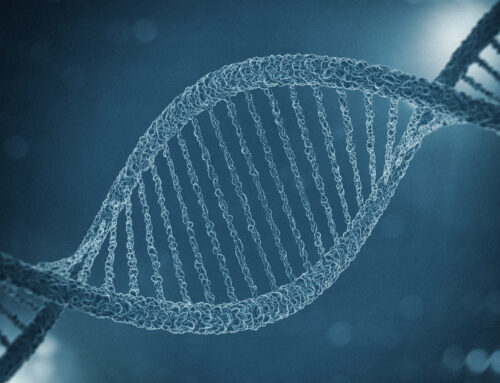
Approximately 1,762,450 new cancer cases will be diagnosed in the US in 2019. This number has grown rapidly since 2005, but what caused this increase? Is it people’s DNA, their environment, or is it just bad luck?
A lot of the Sarnoff Center’s work focuses on hereditary cancers, particularly BRCA mutations, which are 10x more common in Jewish communities than the general population. BRCA mutations are linked to breast cancer in women in men, ovarian cancer, prostate cancer, pancreatic cancer, and melanoma. The average woman’s lifetime chance of a breast cancer diagnosis is about 12%, but that increases to 45%- 87% with a BRCA mutation. Lynch syndrome is another inherited genetic disorder that can be linked to Ashkenazi Jewish ancestry, which increases the likelihood of some gastrointestinal cancers.
If someone with a mutation such as these ends up developing cancer, it typically happens earlier in life than with the average person. Cancer predisposition genes are typically present from birth, though the actual cancer doesn’t form until later. That means there must be more to it than just genetic predisposition.
Let’s take a deeper dive into BRCA mutations. We all have BRCA genes: one copy from mom, and one from dad. If both parents give their daughter unmutated copies of the BRCA gene, she has that 12% risk of a breast cancer diagnosis in her life. The cancer risk increase happens with a mutation in one of the two copies: since only one copy of the mutation increases risk, inheritance happens in an autosomal dominant fashion.
So, why do some women with BRCA mutations develop breast (or another related) cancer, while others do not? The development of cancer in the body based on a predisposition usually manifests in a mechanism called the “two-hit theory.” The first hit is the mutation at birth, and the second hit is later in life when the cancer begins to form. The interaction of other factors, such as the environment or other genes in the body, with a preexisting cancer risk mutation may lead to or prevent cancer development.
Many environmental factors can cause a second hit. Sun or chemical radiation exposure, alcohol use, poor diet choices, the process of aging, or tobacco use are some of the most common. Sometimes, these risk factors don’t even cause mutations, they just change gene expression. Someone could live the healthiest of lifestyles, but the interaction of certain genes affects the way that tumors get suppressed. Researchers at Johns Hopkins also found that some tissues in the body are just more susceptible to “bad luck” and random DNA mutations that cause cancer.
The takeaway here is that while genetics can increase our risk of cancer, only about 5% of all cancers are due to underlying genetic causes. Of the 1,762,450 estimated cancer diagnoses this year, about 88,000 will have a direct underlying gene mutation, and almost one million cases will not. Our environment and random chance play a lot more into cancer diagnosis than one may expect; being positive for a genetic mutation that leads to cancer predisposition is NOT a diagnosis, just as being negative for one of these genes does NOT clear one of a lifetime cancer diagnosis. The team, and specifically the genetic counselor, at the Sarnoff Center is open and available to answer any questions or connect you to more resources related to cancer genetics.
Photo citation: https://www.flickr.com/photos/genomegov/26453305264/


